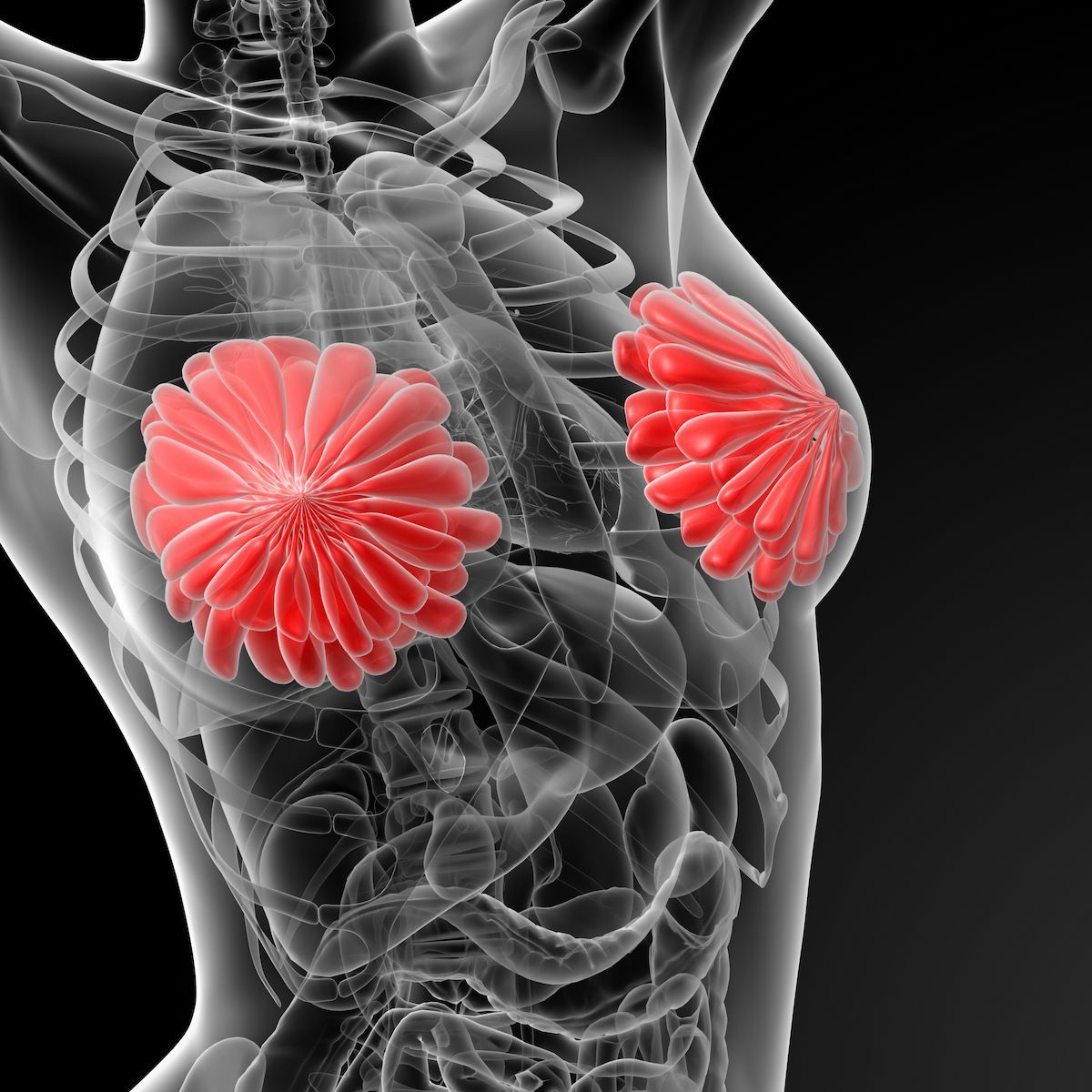Retreatment With Pertuzumab/T-DM1 Improves PFS in HER2+ Breast Cancer
Pertuzumab retreatment modestly improved progression-free survival and meaningfully improved overall survival in advanced nHER2–positive breast cancer.
Pertuzumab retreatment modestly improved progression-free survival and meaningfully improved overall survival in advanced nHER2–positive breast cancer.

Retreatment with pertuzumab (Perjeta) combined with trastuzumab emtansine (T-DM1) plus physician’s choice of chemotherapy may improve survival outcomes in patients with HER2–positive locally advanced or metastatic breast cancer, according to results from a final overall survival (OS) analysis of the phase 3 PRECIOUS study (NCT02514681) published in the Journal of Clinical Oncology.1
After a median follow-up of 25.8 months (IQR, 13.2-41.2), the pertuzumab combination therapy elicited a median OS of 36.2 months (95% CI, 24.4-43.0) vs 26.5 months (95% CI, 20.0-35.0) trastuzumab/chemotherapy, a statistically significant improvement (HR, 0.73; one-sided 95% CI, 0.97).Furthermore, the OS benefit was observed across all patient subgroups, except for patients who had less than 180 days of exposure to pertuzumab as first-line exposure.
Additionally, a nonsignificant progression-free survival (PFS) benefit with pertuzumab-trastuzumab-chemotherapy was observed. The addition of pertuzumab to the combination regimen showed a median PFS of 5.5 months (95% CI, 4.1-6.5) vs 4.2 months (95% CI, 3.2-4.8) with trastuzumab/chemotherapy (HR, 0.81; one-sided 95% CI, 1.02). In the updated PFS analysis, 87.0% of the pertuzumab combination group and 88.1% of the trastuzumab-chemotherapy group experienced PFS events.
“Although the PFS improvement with pertuzumab retreatment was modest, OS with the sufficient number of events is a robust end point and pertuzumab retreatment demonstrated a clinically meaningful improvement in OS,” Yutaka Yamamoto, MD, PhD, of the department of Breast and Endocrine Surgery at Kumamoto University Hospital, Kumamoto, Japan, wrote in the publication with study coinvestigators. “Retreatment with the same dual HER2 blockade of pertuzumab plus trastuzumab could contribute to improving survival in patients who were previously treated with dual HER2 blockade using pertuzumab and trastuzumab as first- or second-line therapy for [locally advanced/metastatic breast cancer].”
A total of 211 patients were screened for trial enrollment, and patients with HER2–positive locally advanced/metastatic breast cancer were enrolled on the study and randomly assigned 1:1 to receive either pertuzumab-trastuzumab-chemotherapy (n = 110) or trastuzumab/chemotherapy (n = 109). Treatment consisted of 840 mg of pertuzumab as a loading dose followed by 420 mg maintenance doses every 3 weeks in the pertuzumab arm.2 Both study arms were given 8 mg/kg of an intravenous loading dose of trastuzumab followed by 6 mg/kg maintenance doses every 3 weeks.
Chemotherapy consisted of either docetaxel, paclitaxel, nab-paclitaxel, vinorelbine, eribulin, capecitabine, or gemcitabine. Additionally, treatment continued until disease progression, intolerable adverse events (AEs), or withdrawn consent.
Patients in the pertuzumab combination and trastuzumab/chemotherapy arms had a median age of 57 years (range, 27-81) and 60 years (range, 32-83), respectively. In respective arms, most patients had an ECOG performance status score of 0 (72.2% vs 67.0%), had estrogen receptor–positive disease (53.7% vs 58.7%), and had visceral disease involvement (67.6% vs 68.8%). Furthermore, the most common metastatic sites included lung (29.6% vs 30.3%), liver (20.4% vs 17.4%), and bone (19.4% vs 22.0%), in each respective arm.
Measurable disease was reported in 83.3% and 84.4% of respective arms, and 56.5% vs 59.6% has 2 previous chemotherapy regimens. A total of 60.2% and 60.6%, respectively, had a duration of previous pertuzumab exposure as first-line therapy of 180 days or greater, and 17.6% and 18.3% had a duration of previous pertuzumab exposure as second-line therapy of 120 days or greater. The most common chemotherapy agents used were eribulin (58.3% vs 43.1%) and vinorelbine (24.1% vs 36.7%).
The primary end point of the trial was investigator-assessed PFS. Key secondary end points included OS, PFS assessed by an independent viewer, and safety.
Grade 3 or higher AEs occurred in 61.9% of the pertuzumab group (n = 105) and 69.4% of the trastuzumab/chemotherapy group (n = 108; P = .253). Additionally, serious AEs occurred in 18.1% and 21.3% of respective groups (P = .608). Dose reductions, discontinuations, and deaths occurred, respectively, in 24.8%, 18.1%, and 1.0% of the pertuzumab combination arm, and 25.0%, 10.2%, and 0.9% of the trastuzumab-chemotherapy arm.
The most common any-grade AEs in respective arms included neutropenia (78.1% vs 73.1%), skin and subcutaneous disorder (22.9% vs 16.7%), stomatitis (22.9% vs 15.7%), and diarrhea (21.0% vs 6.5%). The most common grade 3 or higher AEs included neutropenia (45.7% vs 48.1%) and febrile neutropenia (15.2% vs 16.7%).
References
- Yamamoto Y, Iwata H, Saji S, et al. Pertuzumab retreatment for human epidermal growth factor receptor 2–positive locally advanced/metastatic breast cancer (PRECIOUS study): final overall survival analysis. J Clin Oncol. Published online January 24, 2025. doi:10.1200/JCO-24-01673
- Yamamoto Y, Iwata H, Taira N, et al. Pertuzumab retreatment for HER2‐positive advanced breast cancer: a randomized, open‐label phase III study (PRECIOUS). Cancer Sci. 2022;113(9):3169-3179. doi:10.1111/cas.15474
Newsletter
Stay up to date on recent advances in the multidisciplinary approach to cancer.